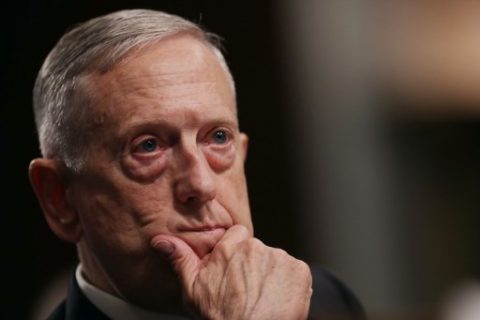
by Thomas Watkins
Agence France Presse
WASHINGTON, United States (AFP) — United States Defense Secretary Jim Mattis has vowed that the Trump administration will not repeat the “mistakes of the past” in Afghanistan, after the president signaled a desire to give the Pentagon wide latitude in setting war-fighting policy.
But given Afghanistan’s violent history and the fate of successive presidents’ efforts to score some sort of victory there, analysts are not confident of Mattis’s chances of longterm success.
Unlike his predecessor Barack Obama, who kept battlefield commanders on a tight leash and scrutinized each deployment, President Donald Trump has deferred to top brass — the men he likes to call “my generals.”
Though Trump has said little about Afghanistan, this week he gave Mattis authority to set troop numbers there at whatever level he sees fit, a decision finalized as the Pentagon chief told lawmakers America is still “not winning” against the Taliban.
The Pentagon is reportedly considering deploying an extra 3,000 to 5,000 troops — some of whom would come from North Atlantic Treaty Organization allies — in Afghanistan to help train and advise local forces fighting the Taliban and other insurgent groups.
“This administration will not repeat the mistakes of the past,” Mattis declared Wednesday.
“We cannot allow Afghanistan to once again become a launching point for attacks on our homeland or on our allies,” he said, alluding to the former Taliban government’s granting haven to Al-Qaeda before the September 11, 2011 terror attacks in the US.
Nearly 16 years after the American-led invasion of Afghanistan, and after successive administrations have tried different troop levels and engagement strategies, observers are skeptical.
“If all we are doing is tinkering around at the margin of a strategy that amounts to ‘Muddle through and hope for a miracle,’ then 3,000 to 5,000 troops are not going to make a difference,” Stephen Biddle, a professor at George Washington University and an Afghanistan expert, told AFP.
Currently about 8,400 US troops are in Afghanistan along with about 5,000 NATO forces. Additional troops would allow the Western advisers to work with more Afghan combat units, though the locals would still be doing the actual fighting.
Mattis stressed that his new approach on Afghanistan, to be presented to Trump by the middle of July, will have a broader “regional” emphasis and not be beholden to any timelines.
After sending an additional 30,000 troops to Afghanistan in 2009, Obama drew heavy criticism for subsequently announcing when they would withdraw.
“That was a huge strategic mistake,” Bill Roggio, an Afghanistan expert and senior fellow at the Foundation for Defense of Democracies, told AFP.
Obama had been elected on a pledge to end US wars in Iraq and Afghanistan and faced pressure to promise that new troop deployments would be temporary.
“The international community is going to have to hold with it, and when we reduce, we reduce based on conditions on the ground, not on an arbitrary timeline,” Mattis told lawmakers.
Stem the tide
US troop levels in Afghanistan peaked at around 100,000 under Obama, who later embarked on a steady drawdown aiming to completely end America’s combat role.
The US and NATO handed security responsibility to Afghan forces at the start of 2015, but the outcome has been brutal.
Local troops have been slain in their thousands, corruption remains endemic and as the Taliban continues to gain ground, US commanders concede the situation is a stalemate at best.
Roggio’s assessment was that an additional troop deployment would “stem the tide of the Taliban advance” but could not be known for sure until it was clear what the troops would be doing.
Pointing to the Soviet occupation of Afghanistan during the 1980s, Democratic Senator Jon Tester questioned whether victory was possible.
“Is it achievable? This country’s been at war for God knows how many centuries,” Tester said.
Mattis, a history scholar, said it is.
His new strategy would come in consultation with other US government agencies.
“I will set a US military commitment consistent with the commander in chief’s strategic directions and his foreign policy, as dictated by Secretary of State (Rex) Tillerson,” Mattis said.
The decision to let Mattis, a retired Marine general who fought in Afghanistan, bring extra troops into the country indicates the Pentagon has prevailed over Trump’s advisers who’d advocated for an American withdrawal.
Thousands more troops going back to Afghanistan could still be a tough sell for Trump, who campaigned on an “America First” platform and a pledge to reduce US adventurism abroad.
About 2,400 US troops have been killed in Afghanistan since 2001 and another 20,000 wounded.
The US government has already spent around $1 trillion on warfighting and rebuilding, much of which has been squandered on wasteful projects.
© Agence France-Presse







